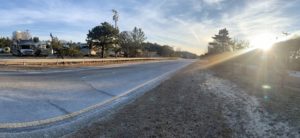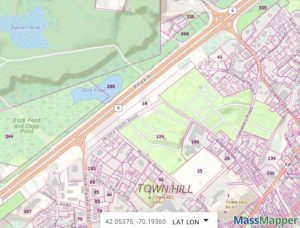PROVINCETOWN — Two measures on the warrant for Provincetown’s April 4 town meeting consider the removal of the two southern lanes of Route 6 from Herring Cove to Conwell Street. Those inbound lanes sit on town-owned land and, for a half mile from Conwell Street to just west of the dog park, they are adjacent to large town-owned parcels.
Article 19 is a nonbinding resolution that asks if townspeople want to see a detailed proposal to remove the lanes “for the development of housing and other municipal uses (parking, sewer leaching areas, bikepaths, etc).”

“It’s a big decision to move forward with development along that corridor,” Town Manager Alex Morse told the select board last fall. “The suggestion has been to do a nonbinding referendum at town meeting, to get a sense from voters before we move full steam ahead on that.”
Article 20 asks to spend $60,000 on a consultant who could assess the land and its suitability for development, taking into account wetlands, endangered species, and flood potential, according to Assistant Town Manager David Gardner. The result would be recommendations to the select board regarding which areas could and could not be developed.
The two lanes from Herring Cove inbound to Shank Painter Road are already scheduled to be removed as part of the town’s Shank Painter Road Reconstruction Project, which was approved for $12 million in federal grant money in 2018. That project includes bike lanes and visual and safety improvements to Shank Painter Road, turns the intersection with Route 6 into a roundabout, and replaces the southern lanes out to Herring Cove with a bike path.
The select board approved that design in October 2019, DPW Director Rich Waldo told the Independent. Construction is set to begin in late 2023 or early 2024.
The lanes already being removed are 1.2 miles long, but they are fronted for almost their entire length by state-owned conservation land. Only the portion relatively close to Shank Painter abuts a wider stretch of town-owned land. That section, which runs from the dog park toward Patrick Patrick’s warehouse at 207 Route 6, could probably be developed for housing, said Gardner.
The lanes from Shank Painter to Conwell Street have never been formally studied for removal. The town received a planning grant last year to assess the area’s potential to replace parking spaces being lost to the Stellwagen Bank Visitor Center, but that’s not yet underway.
A strip of land just south of these lanes is owned by the town, including a four-acre parcel at 16 Jerome Smith Road. Some of it is occupied by the skate park and an RV parking lot. A soccer field sits atop a leaching field for the town’s wastewater system. The proposed new police station is sited at the edge of 16 Jerome Smith, near the intersection of Route 6 and Shank Painter.

Closer to Conwell Street is a large patch of wetlands. Alongside the cemetery are two smaller ones.
Gardner said the assessment proposed in Article 20 “is not to determine what gets built as housing and what gets built as municipal buildings, or bike paths. It’s what areas have constraints on development.” With that information in hand, he said, the select board gets to decide how the land gets used.
There are some major municipal projects on the table that could involve the land. The DPW recently presented a significant sewer expansion program to the select board that includes a new wastewater substation at either the soccer field or the area between the dog park and Patrick’s property. The leaching field beneath the soccer field could be moved south to Motta Field, Gardner said, but that would be more easily done for a wastewater project than for a housing initiative.
Neither of the substation sites would depend on the removal of highway lanes, said Waldo. The select board has not yet expressed a preference between the two sites.
Multiple town committees have endorsed articles 19 and 20 unanimously, including the select board, finance committee, community housing council, year-round market-rate rental housing trust, and conservation commission. The open space committee voted unanimously against article 19 and split 3 to 2 in favor of article 20.
Some open space and conservation committee members who had reservations about development on Route 6 nonetheless endorsed article 20, Gardner said. “It’s science-based, whereas 19 is more of a political vote,” he said.



